Southampton Archaeology Case Studies – St Mary Street
Archaeological excavations on St Mary Street, Southampton. A complex, urban excavation, part of the redevelopment of Southampton.
A developer sought permission to build a four-storey building to provide 13 flats and a retail unit on St Mary Street, Southampton.
In accordance with the National Planning Policy Framework, along with other conditions, the Southampton City Council Planning Archaeologist put an archaeological condition on the site requiring archaeological work be conducted before construction could begin.
Because the site was situated within the former area of the Middle Saxon (650–850 AD) town of Hamwic, a pre-determination requirement for an archaeological evaluation (trial trenches) was requested by the Southampton City Council Planning Department. This was to determine the extent and nature of any archaeology so that the Local Planning Authority (LPA) could make an informed decision. Southampton Archaeology prepared a Written Scheme of Investigation (WSI) that set out a methodology for the archaeological evaluation along with a synthesis of the archaeological and historical background of the area. This utilised the Historic Environment Record (HER) provided by the LPA and considered how the development would impact any archaeology within the site. The methodology was approved by the local authority and work commenced. Three evaluation trenches were dug, and archaeologically significant features were found. Southampton Archaeology produced a report that summarised the findings of the evaluation.
With the results of the evaluation, the LPA put a condition for an archaeological excavation on the development. Southampton Archaeology produced a WSI that detailed the excavation and mitigation strategy. This included a program of works detailing where targeted excavation trenches would go in relation to the density of archaeology and areas that would be most impacted by the development. As part of the methodology, it was agreed that other trenches needed for services and soakaway could be dug by the groundworkers, under the observation of an archaeologist as an archaeological Watching Brief.
The excavation showed that the site was rich in archaeologically significant features dating from the prehistoric to the later medieval periods.
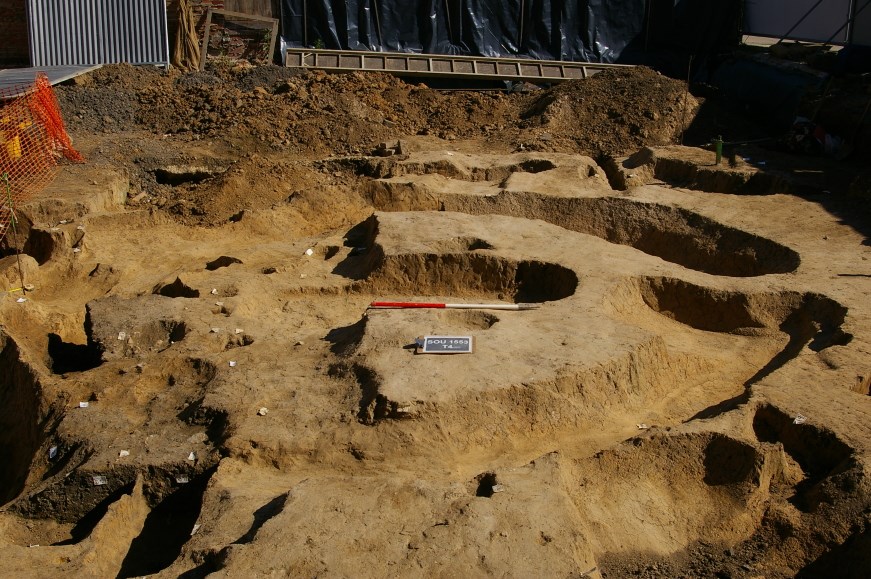
The site after archaeological excavation, showing the Saxon cemetery.
Prehistoric activity included a Mesolithic (10,000-4,000 BC) flint adze and two pits with Neolithic / early Bronze Age (4,000-1,600 BC) pottery, flint flakes and flint tools.
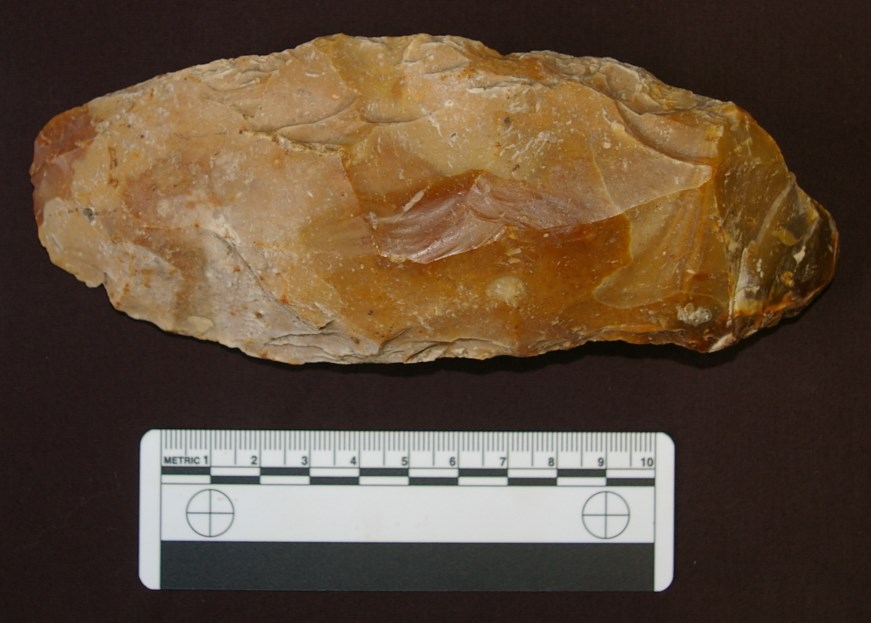
Prehistoric flint adze
Of great importance was an early Middle Saxon (AD 650–850) cemetery that was succeeded by later Middle Saxon occupation and industry. The cemetery was centred on a ring ditch around the central grave of an adult woman. Around the ring ditch were seven further graves, one containing two skeletons with their legs intertwined. The eight people buried included a juvenile, a sub-adult, six adult women and one adult man. Two women had been buried prone, and another had been pregnant. One of the two women in the double grave had had a copper-alloy chain placed on her right collar bone, wrapped in a piece of cloth.
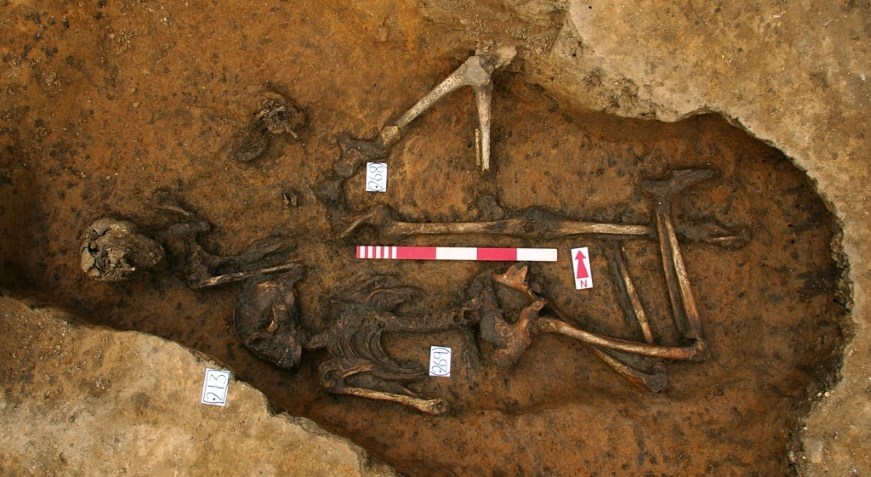
Double burial
The cemetery was succeeded by Middle Saxon occupation represented by several pits. In the late seventh / early eighth century several large pits were dug. They were later filled with rubbish that included animal bone, fragments of quern stones for the grinding of flour, whetstones, bone textile tools, a bone pin, copper-alloy pins, coins, a touchstone for testing the purity of gold, crucibles, silver coins, and much iron slag. Numerous fragments of glass beakers were found together with fragments of a French pot that had been used as a large crucible to melt glass – a rare example of evidence pointing to glass working in Anglo Saxon England.
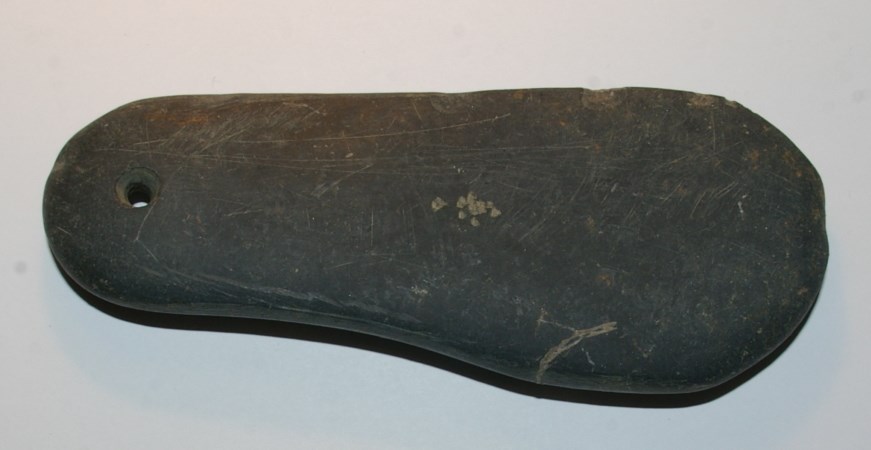
Middle Saxon touchstone
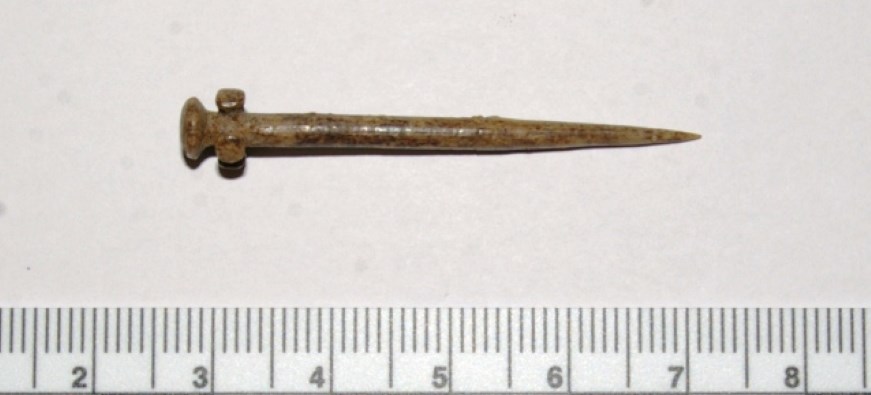
Bone pin
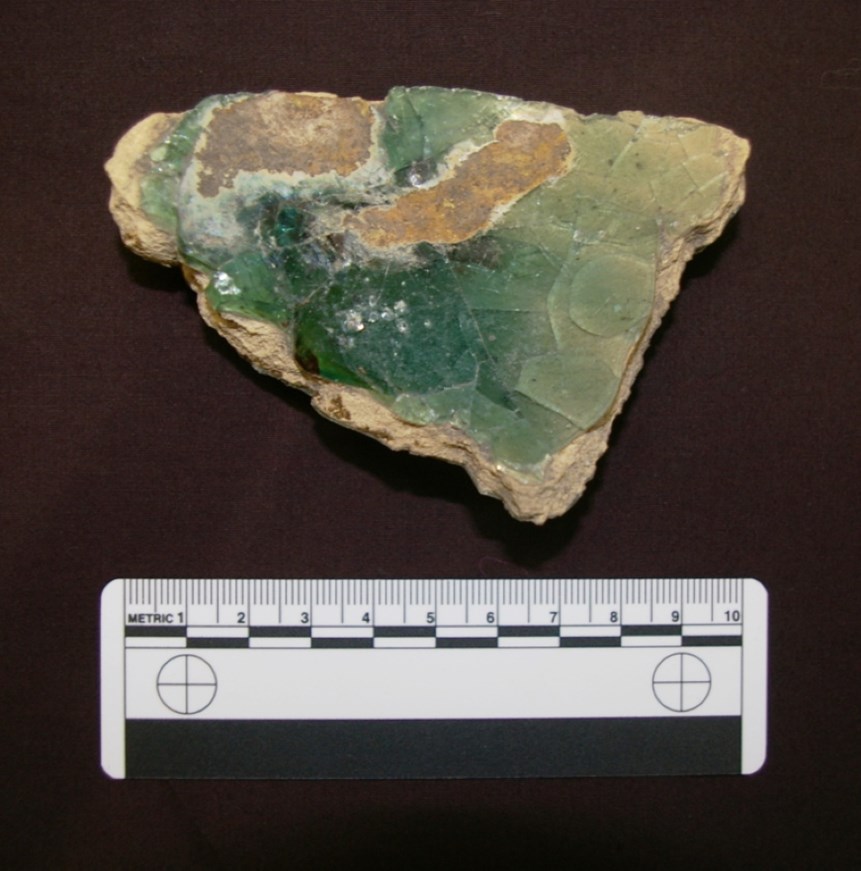
A sherd with glassy deposit
A hiatus in occupation ended in the high medieval period (1200–1350) when the site was occupied again. A wooden structure was erected, and pits were dug and filled with rubbish. The rubbish included buckles and strap ends, a bell, a whetstone, a face jug, and a beautiful polychrome jug imported from Saintes in western France.
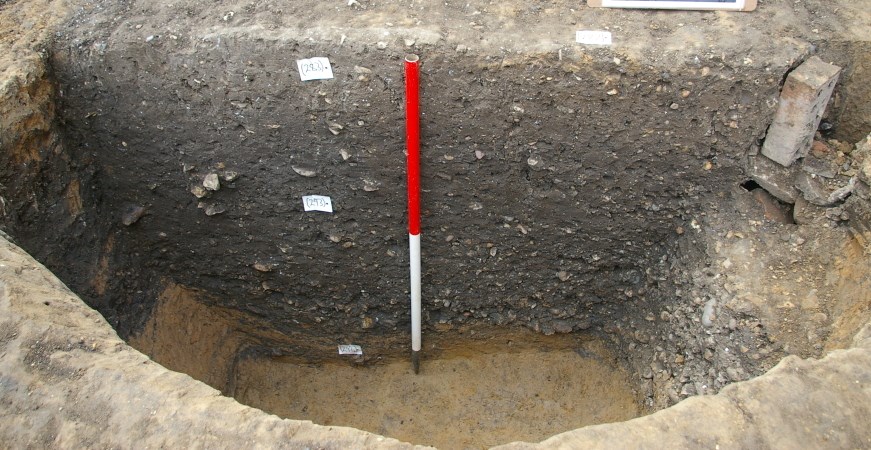
Section through a High Medieval pit
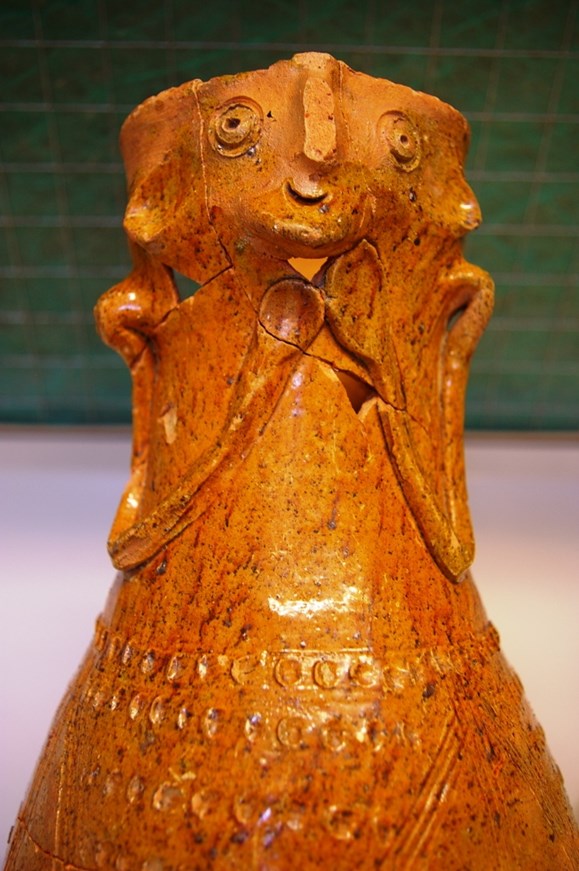
Medieval face jug 3D models by Southampton Cultural Services (@Southampton_Cultural_Services) - Sketchfab
A combined report detailing the archaeological work, including georeferenced plans and specialist reports was accepted by the planning archaeologist and the archaeological conditions were discharged. Modern flats and a retail unit were built on the once derelict site.
As a result of the archaeological work done on the site a greater understanding of Southampton’s past was achieved. The excavation gave us a rare glimpse into the lives and deaths of the people of Saxon and Medieval Hamwic, as well as uncovering some amazing finds for Southampton’s museums.
Southampton Archaeology is proud of the work done to continue to grow our understanding and knowledge of Southampton’s past and to be able to assist in the redevelopment of the city.


